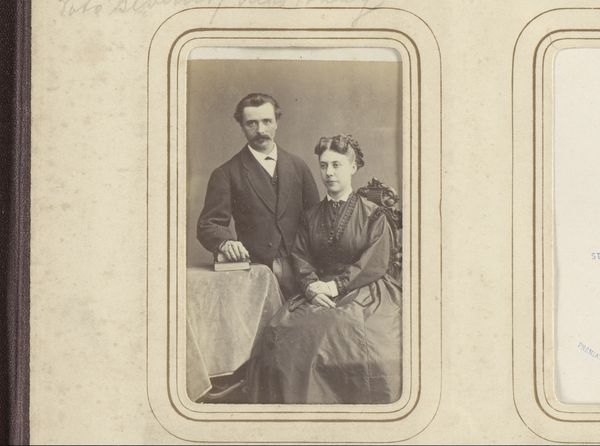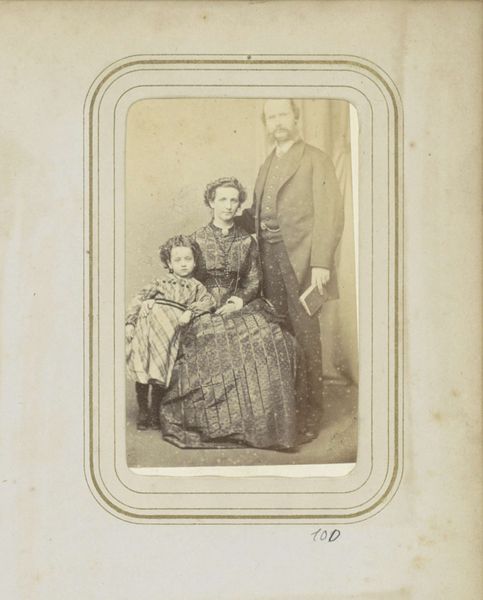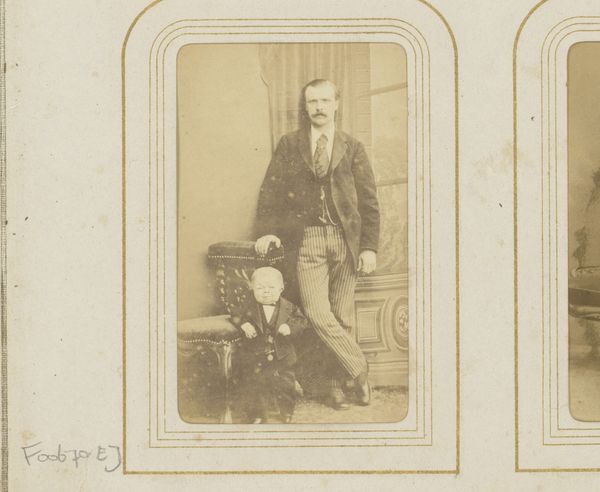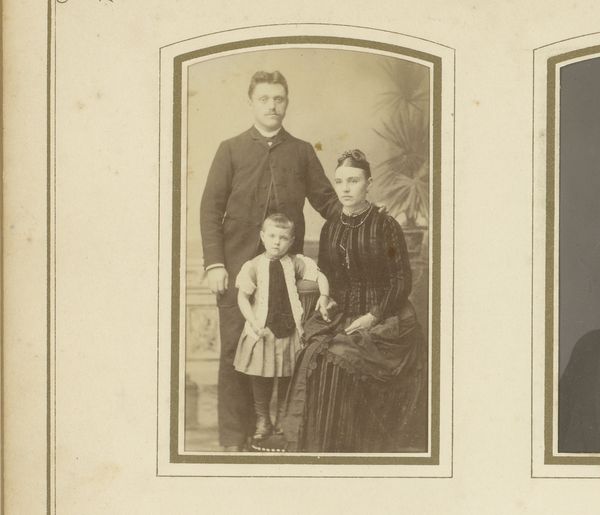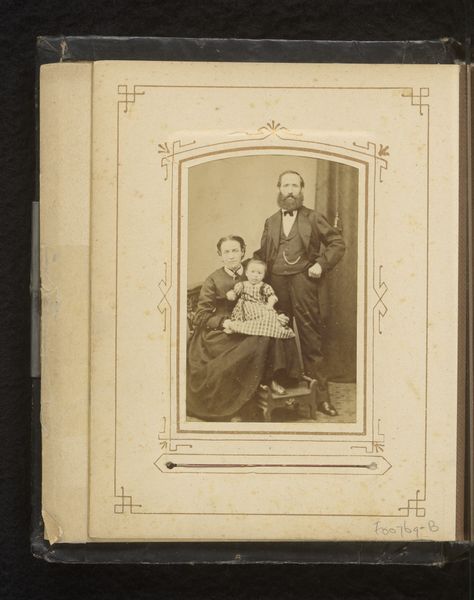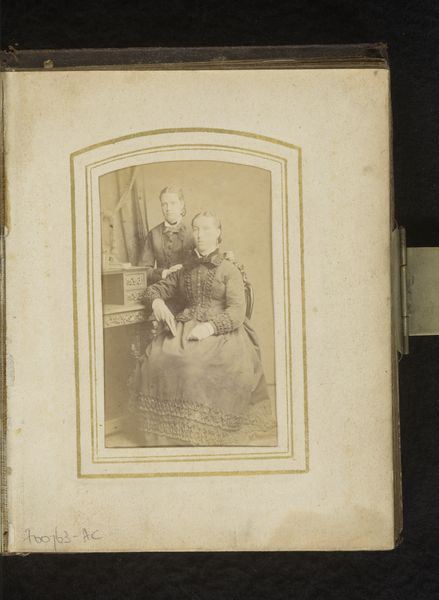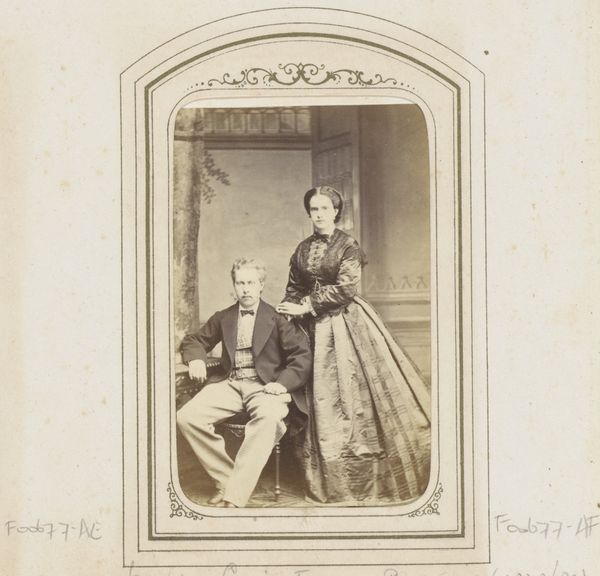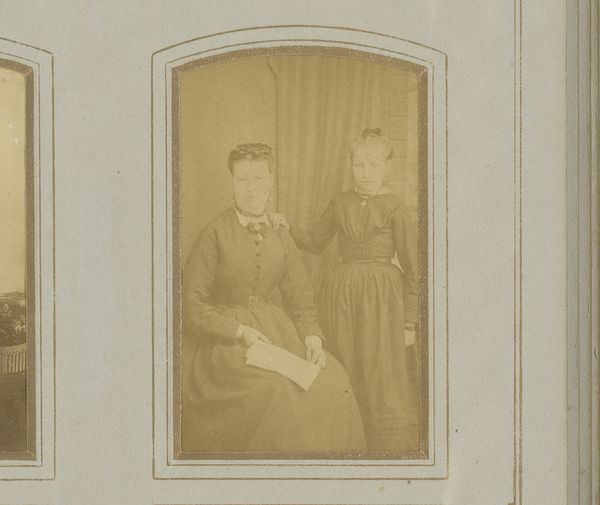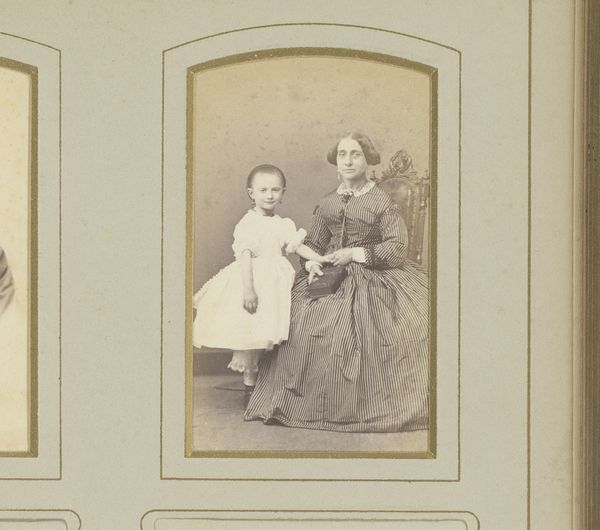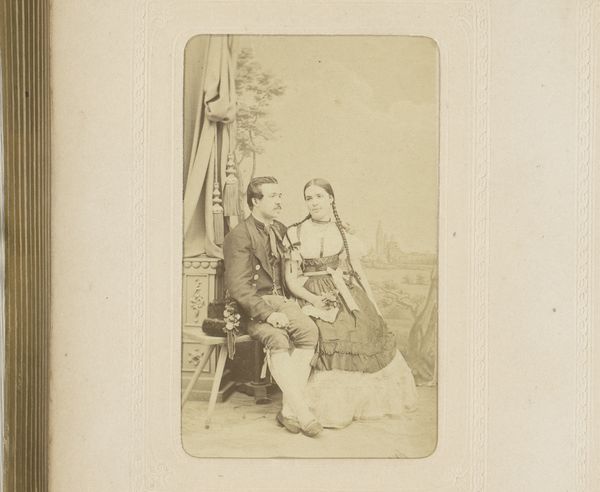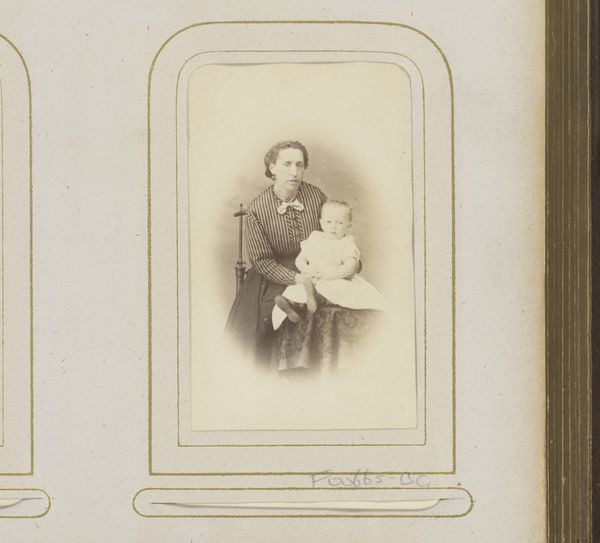
Familieportret van een staande man, een zittende vrouw en een zittend meisje 1864 - 1865
0:00
0:00
photography, gelatin-silver-print
#
photography
#
group-portraits
#
gelatin-silver-print
#
19th century
#
portrait drawing
Dimensions: height 87 mm, width 53 mm
Copyright: Rijks Museum: Open Domain
Editor: We're looking at a gelatin-silver print from around 1864 or 1865 by Johannes Hinderikus Egenberger, titled "Family Portrait of a Standing Man, a Seated Woman, and a Seated Girl." It's striking how posed and formal they appear. What strikes you about this portrait? Curator: I am immediately drawn to the geometric structure. Consider how the rigid, vertical format contains the figures, each carefully arranged to form a pyramidal composition. The man’s upright posture, in contrast to the seated women, anchors the structure. This compositional rigor, a conscious deployment of visual language, emphasizes stability and order. Editor: I notice how subdued the lighting is and the limited range of tones in the print itself. How does that impact the overall effect? Curator: Indeed, the tonality contributes significantly. The monochromatic palette prioritizes form and texture over color. This limited tonal range encourages us to perceive the gradations of light and shadow, the intricate folds of the clothing, and the subtle variations in the textures. Focus your gaze: notice how this reinforces the geometric forms already at play. Editor: So, you're suggesting that the photo's value comes more from its shapes and the way it's structured rather than any story it might be telling? Curator: Precisely. By focusing on the intrinsic elements of the image, we engage with the artist’s deliberate orchestration of form and material, thereby uncovering meaning inherent to the object itself. Isolate one figure, and consider only its contours, the relationship between its light and shadow, ignoring, for a moment, the sentimental aspect of portraiture. Editor: That’s a really different way of approaching it. I've always been drawn to thinking about who these people were and their relationships. I suppose I was too quick to dismiss the formal qualities. Curator: By understanding its formal composition, one deepens their comprehension and appreciation of the photograph itself.
Comments
No comments
Be the first to comment and join the conversation on the ultimate creative platform.
